Here’s six bow-mechanic skills and the tools needed to keep your gear shooting straight.
Archery pro shops experience thriving business setting up and tuning archers’ equipment because many have convinced themselves it is beyond their comprehension. Trips to the bow shop cost money and time away from a busy schedule, and aren’t exactly convenient when a season-opener looms or your bow suffers a minor breakdown in the heat of battle. The hard-core bowhunter should learn to set up, tune and service their own equipment. These basic skills can save a big hunt when a pro shop is hours away, the shop owner is away on a hunt of their own, or simply swamped with last-minute equipment emergencies. This, as they say, isn’t rocket science, especially in the age of the Internet and the plethora of information available on line to the modern bowhunter. All you really need to become completely independent are some basic tools, which involves an investment of $350 to $900, depending on how simple or advanced you wish to make this. Here’s how to get started.
Fletching Arrows
The basic skill of fletching arrows is remarkably simple and keeps arrows that have lost or damaged fletchings in the game. Too, buying raw shafts and fletching them yourself saves lots of money—the basic tools paying for themselves many times over during their lifetime. This also allows you to add the wraps, colors and fletching/nock type you prefer—not what a bow shop has on hand. To start you’ll need a fletching jig, cut-off saw, proper adhesive (air-dry for feathers, “super-glue” for vanes) and fletchings (natural feathers, basic or specialty plastic vanes).
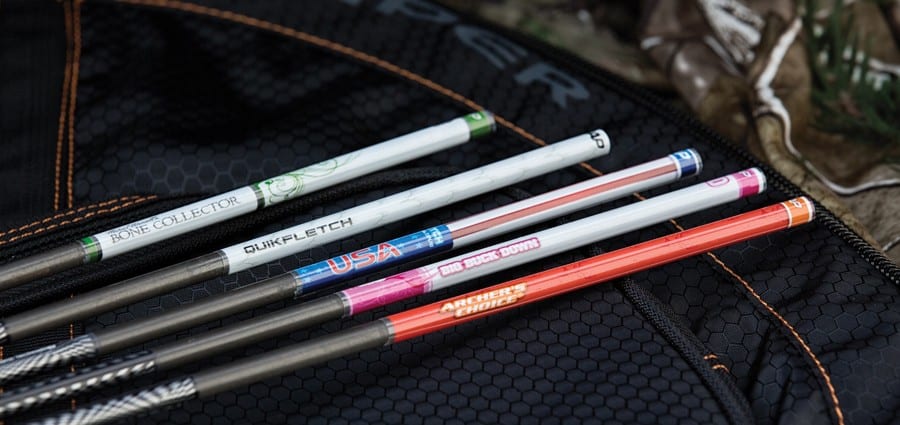
Options are wide open when it comes to customizing your own arrows at home with great options like these from NAP.
Companies like NAP and Bohning Archery can help you with everything but the saw, including a wide selection of plastic vanes, vinyl wraps and fletching tools. As for the fletching jigs, a couple good ones from from Bohning include the Blazer Helix Fletching Jig (MSRP $58), a simple jig accommodating vanes up to 2.25 inches and applying a 3-degree offset.
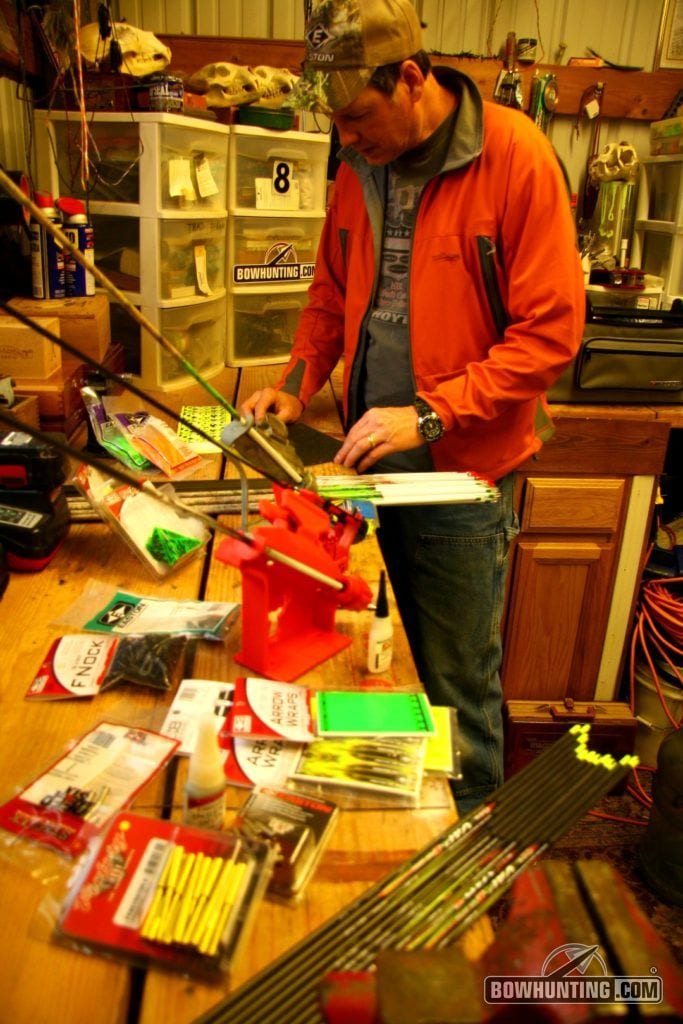
The ability to fletch your own arrows at home will save you tons of time…and money too.
It’s so simple to use beginners become fletching experts after only a half dozen shafts. For those preferring longer vanes, The Big Jig ($65) offers the same no-brainer design.
I’ve used the same three Bitzenburger’s (Bitzenburger.com) Dial O-Fletch (MSRP $95) jigs for more than 30 years. They include all-metal construction and allow the most aggressive helical attitudes possible on anything from thick line cutters to skinny carbon hunting shafts. Jo-Jan’s (Jojan.net) Multi-Fletchers (MSRP $109) allow you to fletch a half dozen arrows at a time, a single jig holding six separate clamps, including Standard (straight clamps for off-set fletching attitude) or Helical (with right- or left-wing 11-degree helix per inch clamps).
Carbon shafting requires a high-speed cut-off saw, representing the most expensive part of this venture. Apple Archery (Applearchery.com) offers the Pro Arrow Cutter (MSRP $264), a saw I’ve used going on two decades without failure. It includes dust-collection system and produces precise, clean cuts on any arrow material. It’s equipped with built-in measuring guide and sliding/locking nock cradle that makes cutting arrows to exact length fast and simple.
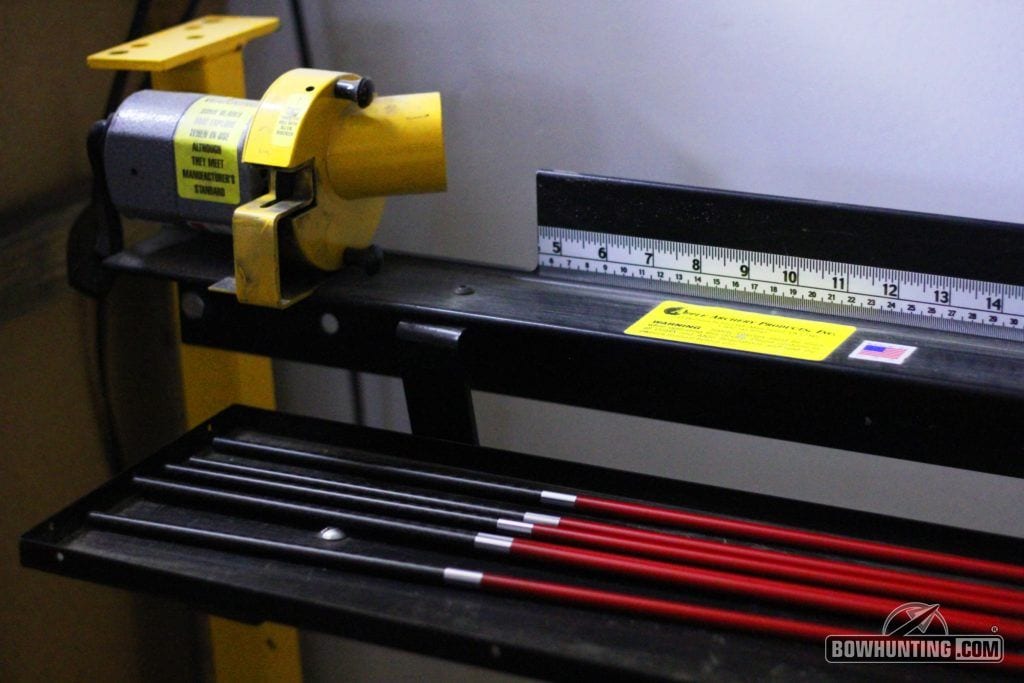
Considering some of the prices that the local archery shop will charge for the simple task of cutting and arrow, having your own saw can pay for itself fairly quickly.
Bow Press
Installing new bowstrings and buss cables or replacing major parts such as a cracked limb or bent axle following an accidental dry fire will typically call for putting your bow in a press. There’s also the everyday chores like installing peep sights, split-string silencers, eliminator and speed buttons, adjusting buss-cable timing, or installing certain cam-module systems. They will all require you release tension from the string via a bow press. These are offered in two basic styles: affordable portable models, which are most useful for field work but can be used at home if you cannot afford a full-sized press, and full-sized presses that you bolt to a work bench. The 2nd options is one of the most expensive investments on this list, but makes jobs faster, easier and much safer.
Apple Archery’s Edge Economy Bow Press (MSRP $369) is the most affordable full-sized press around. It allows limb-tip (parallel) or conventional compression without harmful limb torque and accommodates long or short risers. All-steel construction and durable powder coat assuring long life. Another affordable, bench-mount press includes the bare-bones but highly-functional EZ-Green (MSRP $399) from Last Chance Archery (Lastchancearchery.com)—designed especially for home bow mechanics and compatible with any bow design.
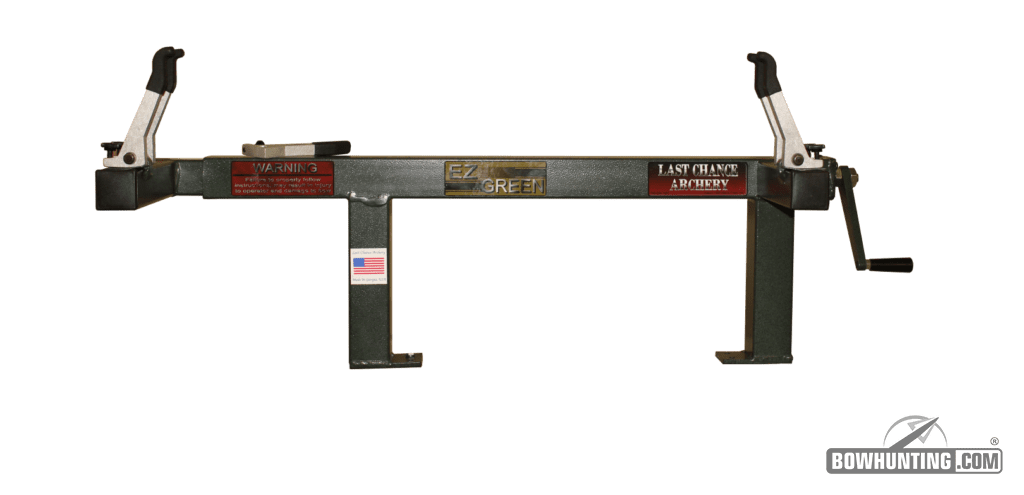
Having your own bow press can be a lifesaver, and the line of presses from Last Chance Archery are hard to beat.
With more patience and much less cash, portable bow presses also serve well. RAM Products (Ram-products.com) Ratchet-Loc Portable Bow Press (MSRP $80) includes limb brackets, rubber-coated connection pins and heavy-duty ratchet strap to remove tension from bowstrings/buss cables for regular maintenance or repair, even those with parallel limbs. Bowmaster’s (Prototechind.com) G2 Portable Bow Press ($55) is even smaller, with L-brackets hooking on each limb end and a center-screw mechanism pulling limbs together to release string tension. Both are small enough to tote into backcountry hunting camps.
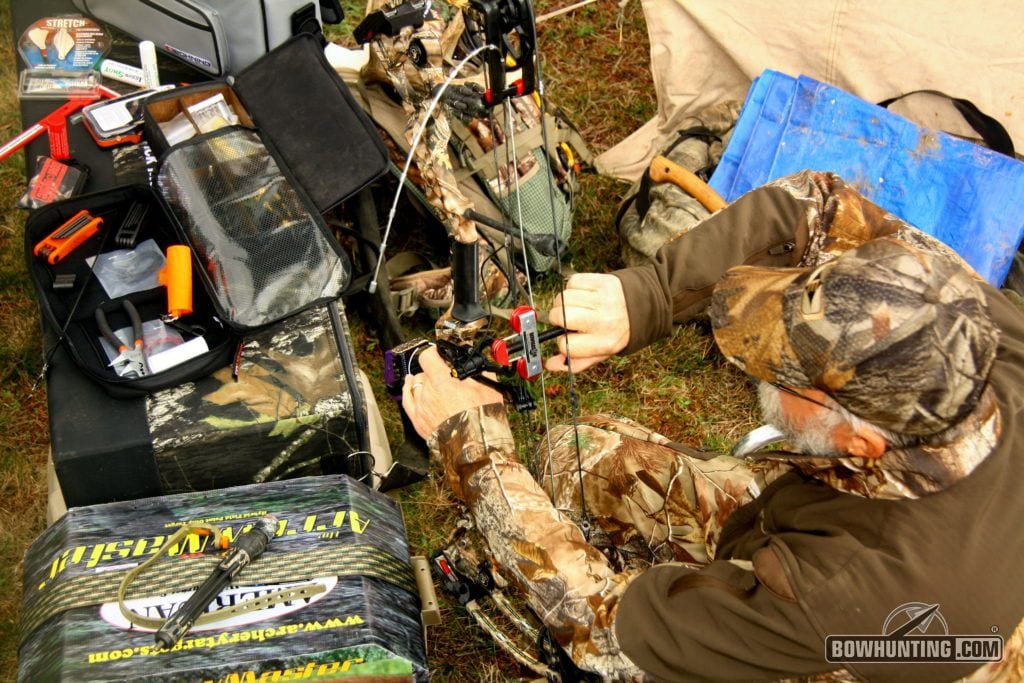
A portable bow press, like this Bowmaster G2, is compact enough to take to hunting camp, assuring you can head off problems in the field.
String Serving
Having your bow’s center serving unravel in the middle of a hunt can be just as disastrous as a cracked limb, except reserving a bowstring is so much easier to remedy—if you have the proper tools. A string server and proper-diameter serving material are quite affordable but can save plenty of headaches. Bohning’s Serve-Tite String Server (MSRP $18.50, plus serving material) makes quick work of replacing failed or ill-fitting serving, a special serving-routing system and tension bolt assuring a smooth, neat job often more reliable than factory serving. Bohning also offers many serving-material options. I’ve also used AAE’s (Arizonaarchery.com) Pro String Server (MSRP $18) extensively, a heavy-duty anodized aluminum tool with a unique double-bar tension system. Self-centering washers provide uniform tension and velvety operation, the replaceable, no-fray thread guide adding to its smooth nature.
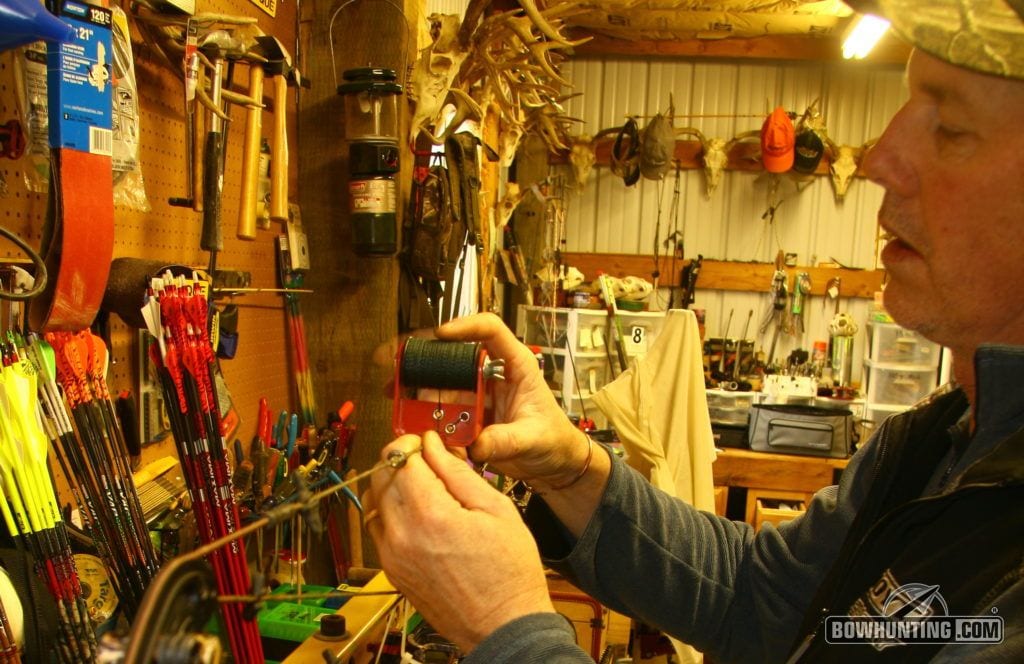
Reserving a bowstring after it becomes worn or simply replacing serving that offers poor nock fit is fast and easy if you own a serving jig like this one from Bohning.
String Loop
Most bowhunters today employ a string loop for accurate shooting and the ability to let down without dislodging the arrow nock. If you’re a serious bowhunter you really should learn how to install and position a string loop properly. Stretch D Loop Pliers by Outer Limit Archery (Outerlimitarchery.com) make this task easier. They’re the only string-loop pliers with a pre-stretching feature assuring all creep is removed before completion, also allowing the shortest D-loop possible, minimizing sacrificed draw length. Stretch D Loop Pliers (MSRP $35) also feature built-in loop-opening mechanism, taking care of all instillation steps with a single tool. A simpler option, also serving as nocking and general-use pliers, is Carbon Express’ (Carbonexpressarrows.com) String Loop Pliers (MSRP $18).
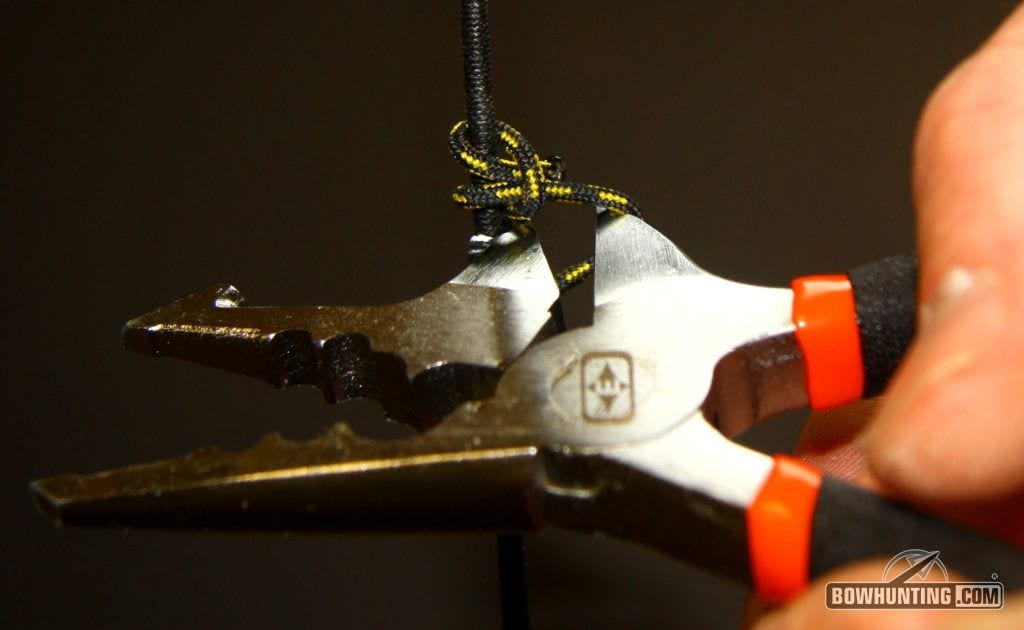
Replacing a worn or failed string loop is easier than you think, especially if you own a set of string-loop pliers made to make the job easier.
Nocking Point
Setting the nocking point/string loop precisely is imperative to top-notch accuracy, especially while shooting fixed-blade broadheads. Get it perfect the first time using R.S. Archery’s (Rsbowvise.com) Bow Tuning Level Set and bow vise. Use the Bowstring Level and vice to hold the bow vertical and level, then use the Arrow Level, clipped to the arrow shaft set across the engaged rest arms, to establish proper nocking point. The Bow Tuning Level Set (MSRP $22 plastic, $219 milled aluminum) also allows you to precisely adjust a bow-sight’s 2nd/3rd axis settings.
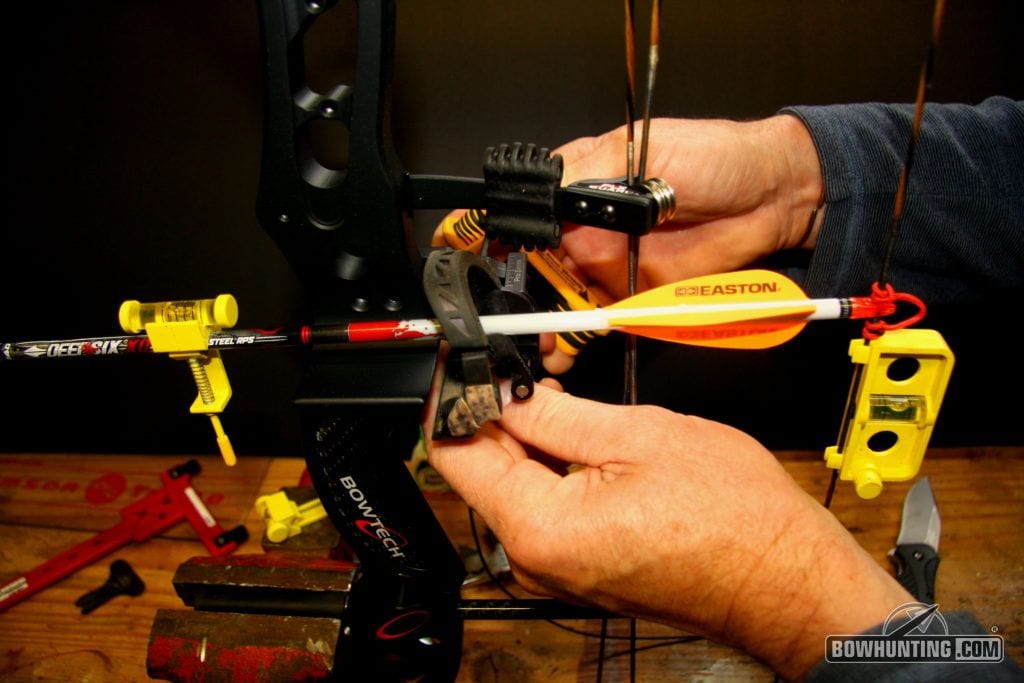
We’ve come a long ways from the old days of simple bow squares and trial and error turning. You can now do it much easier…and at home.
R.S. Archery’s Parallel Limb Bow-Vise H-D (MSRP $169) is one of the best around, including 15-degree leveling block and patented locking systems that holds bows securely with minimal manipulation. Apple Archery’s Economy Bow Vise (MSRP $81) is a more affordable option, including plastic-coated jaws, 360-degree left-to-right and front-to-back rotation and nail-tough, all-steel construction.
Arrow-Rest Tuning
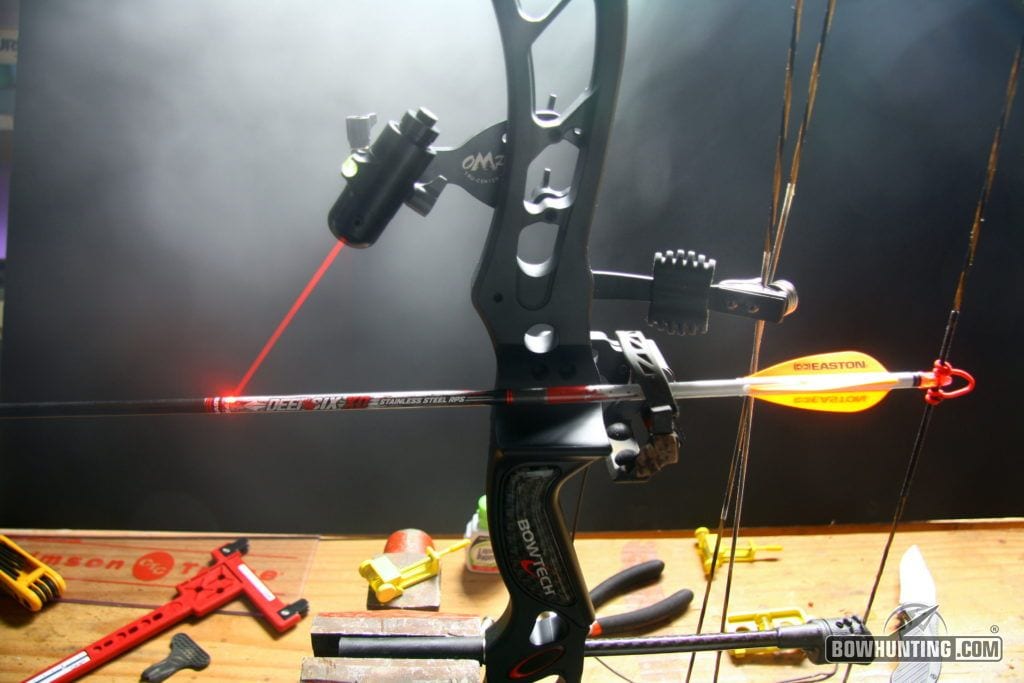
Using a laser center-shot tool, like this one from October Mountain Products, assures you get perfect center shot on newly-installed rests.
Hand in hand, positioning the arrow rest to correlate to your nocking point assures reliable accuracy. This begins with proper center shot. Roughing center shot after installing a new rest generally involves eye-balling along cam flats and down the arrow shaft and working by trial and error from there. Get it perfect the first time using October Mountain Products’ (OctoberMountainProducts.com) OMP Tru-Center 2.0 Laser Alignment Tool (MSRP $90). The machined-aluminum Tru-Center 2.0 attaches to the riser or installed bow sight with thumb screws. The powerful red laser attached to a windage-adjustable, swiveling head allows you to align the rest launcher from the bowstring all the way to the tip of an installed arrow. This tool can also serve to detect cam lean by shooting the laser beam across cam flats.
After setting nocking point and center-shot, fine tuning begins with paper tuning, revealing the attitude of the arrow as it leaves the bow. Specialty Archery’s (Specialtyarchery.com) Paper Tuner (MSRP $150) is just like the units you pay to use in pro shops, with stand, paper dispenser and complete instructions to help fine tune arrow flight for more shooting forgiveness and improved broadhead accuracy. A much cheaper option is .30-06 Outdoor’s (30-06outdoors.com) Paper Tune-It! It’s a simpler, more economical option (MSRP $12, $6 for 20 refill sheets) including heavy cardboard stand and 10 sheets of “How-To” Tuning Paper, all compact enough to take to hunting camp.
Finally, to assure broadhead-to-arrow mating is perfect, use Pine Ridge Archery’s (Pineridgearchery.com) Arrow Inspector (MSRP $33) with bearing-equipped rollers to spin test arrows and reveal small alignment inconsistencies. A wobbling broadhead may simply need to be reseated.
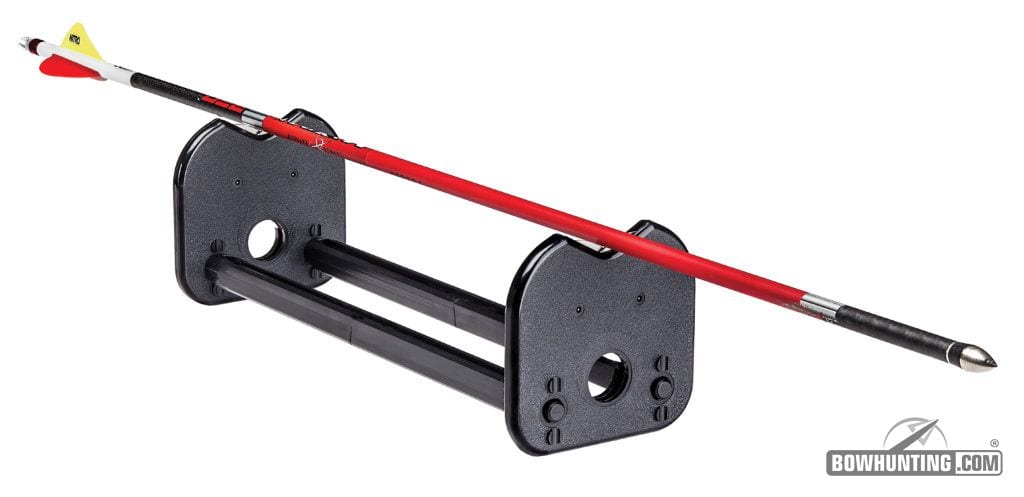
Make sure your arrow is flawless with the Pine Ridge Arrow Inspector.
The basic shop skills will help keep you from missing out on a hunt for lack of know-how or in-ability to get your gear in shape for game time. Learn to use these basic tools and develop the skills necessary to employ them and you’ll be well on your way to bow set-up and tuning independence.

 By
By 



